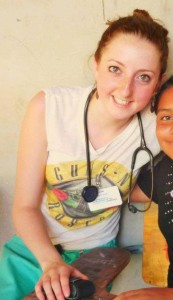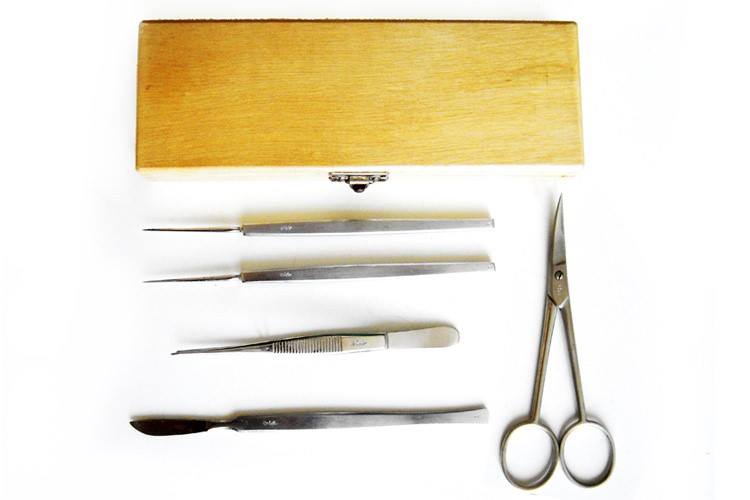May 13, 2014, by studentcontributor
Full body dissection
 Hi! I’m Jane and I’m just coming to the end of my 3rd year as a medical student at Nottingham!
Hi! I’m Jane and I’m just coming to the end of my 3rd year as a medical student at Nottingham!
Deciding where to apply to medical school can feel somewhat overwhelming due to the large numbers of factors to consider. One aspect of the course which attracted me to study at Nottingham was the prospect of full-body dissection. This is currently only still offered by a handful of medical schools in the UK, and has been largely been replaced by prosections and plastinations. Ultimately it is down to personal preference, but dissection is a fascinating and unique opportunity for hands-on anatomy learning!
At Nottingham, dissection is done once a week, for one year. Each seminar group (of about 10-12 students) is allocated a cadaver and given a handbook outlining the structures to be dissected each week. Then it is your responsibility to go away and learn about the relevant anatomy during the week prior to dissection, allowing you to gain much more out of the session, and have some idea what you’re looking at! Having said that, whilst in the textbooks, all the arteries are bright red, the veins bright blue, and the nerves yellow, in reality, most structures within the cadaver are a vague shade of beige, making identification a little more challenging! However, there are always anatomy demonstrators around to help if you’re uncertain what exactly you’re looking at!
A typical dissection session begins with a brief overview of the area of interest by an anatomist. The time is then split between dissecting the cadaver, looking at prosections, bones, x-rays, CT scans, and working through clinical case scenarios. The session ends with a few questions for each student in the group, which may involve pointing out structures on the cadaver, explaining their function, identifying parts of a bone or labelling a diagram. Although this can seem a little scary at first, it is a great way to ensure you learn the topics in advance and are continually working throughout the year, making the holidays before the exams a little less stressful!
At the end of the 12 months, students are invited to the cremation of their cadaver. Most medical students find the service a valuable opportunity to show their respect and gratitude to the person who kindly donated their body, as well as providing some closure to the dissection year.
Frequently Asked Questions
Below, I have answered some questions that most medical students get commonly asked by friends and family during the dissection year:
“Do you know your cadaver’s name?”
Although we found out the real names of our cadavers at their funerals, prior to this, the only details we knew about the body was their cause of death and age at death. It is important to remember that the cadavers were very special people with loved ones, careers, stories to tell, and such selfless personalities that led them to kindly donate their body for your own learning. Therefore, although many students create a pseudonym for their cadaver, it is so important to show respect to the person throughout the whole process.
“Is there lots of blood?”
No, the blood is removed when the preservative is flushed through the body’s blood vessels.
“What if you cut through something important?”
It will happen! It is almost inevitable. I think most medical students have manically tried to tie up bits of membranous fascia in order to try and replicate an important nerve they’ve just sliced through, before one of the demonstrators comes past! But dissection is not necessarily about creating the most beautifully dissected limb, it’s more about the learning and knowledge you gain from actively doing it.
“Is it true that the smell of the preservative makes you hungry?”
I think it is a combination of 3-hour dissection sessions, and the smell of the preservative that does indeed make you feel hungry! People are often worried about how bad the bodies might smell; the preservative has quite a unique, strong smell which can take a bit of getting used to, and dissecting some areas of the body can smell a little stronger than others, but I don’t think it is anywhere near as bad as people imagine!
“I’ve heard stories about medical students in the past cutting off bits of the body and using them in pranks, does this happen?”
Although this may have occurred a number of generations ago, dissection is now strictly regulated by the Human Tissue Authority which requires all tissue cut from the body to be returned to the body. It is also a matter of respect for the person who has donated their body for our benefit. Anonymity and privacy is prioritised, and no phones or any devices with cameras may be taken into the dissection room for this reason.
Personally, I think one of the most beneficial ways of learning is through the act of doing. Dissection allows you to put a context to images and descriptions seen in textbooks as well as developing new practical skills. Amongst many students at Nottingham, dissection is seen as one of the most enjoyable and valuable aspects of pre-clinical medicine, and something that really enhances learning. Make the most of the rare and unique opportunity!


Hi,
thanks for the tips. My older colleagues also recommend to use free internet apps like https://practiceanatomy.com/ or youtube videos for anatomy to practice – helped them alot… 🙂